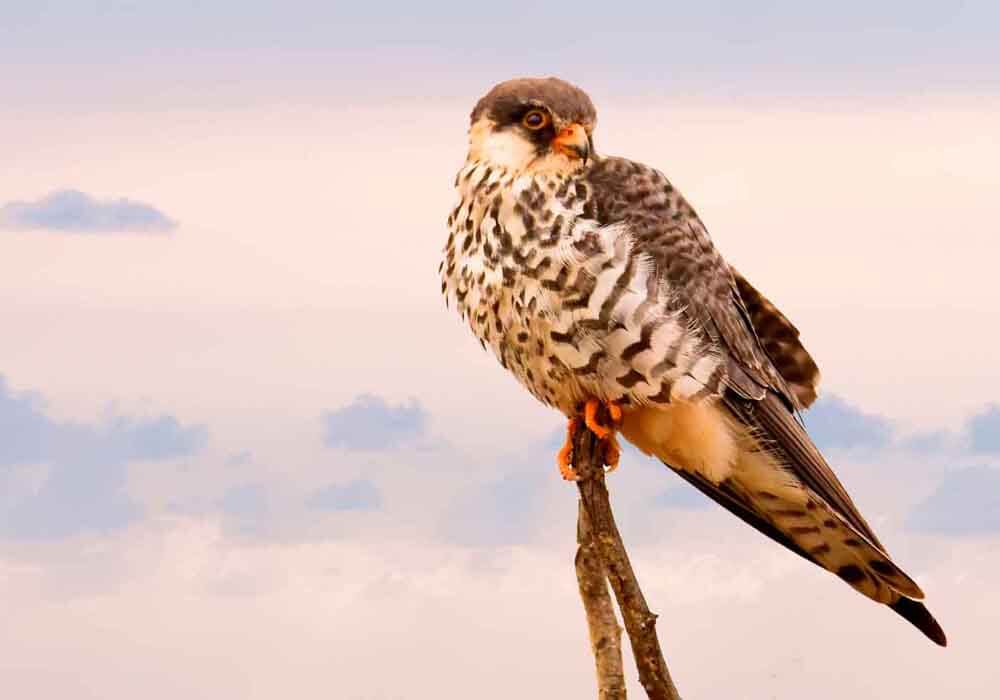Is It Good or Bad
To Have a Hawk in Your Yard?
Hawks are amazing creatures, but they’re known predators that can swoop down and grab a rabbit or even the family cat. If you have a hawk’s nest near your property, you might be afraid to let your pets out, but can this be a good thing? So, is it good or bad to have a hawk in your yard?
It is good to have a hawk in your yard. Not only are they nature’s most effective exterminators, but they are also unique animals with fascinating habits. They also help maintain the balance of the ecosystem. However, they can be nuisances to pet parents and poultry farmers.
This article will reveal the good, the bad, and the ugly of having these raptors as house guests. Should you chase them away or welcome them with open wings? Stick around for the answer.

Pros Of Having a Hawk In Your Yard
Contrary to common belief, it’s advantageous to have hawks gliding over your backyard. Since they’re raptors, hawks have a lousy reputation for being predators that steal chickens or family pets. However, the same factors that have sullied their name make them perfect guests for your space.
Hawks Offer Free, Green Extermination Services
Hawks keep the populations of pesky rodents and reptiles in check. These are animals that are destructive to our homes and the environment.
Being carnivorous, hawks love a meal made up of meat, including the following:
- Rats
- Gophers
- Squirrels
- Insects
- Snakes
- Lizards
- Smaller birds
Many of these animals can ruin our homes and businesses, as well as our vehicles. Rats are notorious for nibbling on our groceries and destroying our clothing, while some snakes pose dangers to anyone who goes near them.
While we might hire exterminators to eliminate these pests with harmful chemicals and traps that might harm our pets, hawks offer these vital services to us for free. What’s better? Their feeding habits demonstrate the circle of life in greenways that are safe for the environment.
Once bothersome pests notice the hawks in your area, they’ll be quick to hit the road. The abundance of snacks in your abode isn’t worth the risk of being mauled by a hungry raptor.
If you see a hawk perched on a tree near your yard, be glad they’re setting up shop and bringing more hawks to your area, as they are naturally keeping the population of destructive animals in check.
Feel free to salute these winged wonders for their contribution to your pest-free home the next time you spot them flying overhead.

Are Hawks predators or scavengers? Are they opportunistic eaters, or picky ones? Read my interesting article to get all the facts!
The Presence Of Hawks Indicates a Healthy Ecosystem
When considering if it’s good or bad to have a hawk in your backyard, consider the vital role of these birds of prey in the overall ecosystem.
Natural ecosystems contain perfect combinations of every group in a food chain to enable them to remain healthy and sustainable for the individual members. As a result, having hawks hovering in your airspace is a great sign that these combinations are in place.
What would the absence of one group mean for the larger ecosystem?
Let’s say someone in your neighborhood shooed the hawks away. With fewer predators, the population of squirrels and rodents would explode.
Rodents eat nuts and other grains, and then these seeds would dwindle with the increase in those ravenous creatures. Fewer seeds will, with time, result in fewer trees, limiting the biodiversity of your neighborhood and reducing the benefits you’d enjoy from woodland in the area.
Rabbit populations can also wreak havoc in the ecosystem if left unchecked. Overgrazing can reduce the regeneration of native plants and also impact biodiversity.
Hawks Are Marvelous Subjects For Birdwatching
Birdwatchers have long studied the habits and characteristics of raptors. Among the many reasons hawks are stunning to behold, here are some of my favorites:
- The hawks have impressive visual acuity. While atop a tree 1 mile (1.6 km) away from your yard, these raptors can see the snake slithering in your grass and establish a strategy to catch its prey, making them the animals with the best sight in the world. Their hearing is also impeccable.
- They’re experts at picking up the pace. As they dive towards the ground to capture the snake, they can achieve speeds of up to 150 mph (241 kph). They can also slow down when needed. This change in pace is necessary to complete the miles-long migrations some hawk species take annually. is it good or bad to have a hawk in your yard
It would be difficult to appreciate these fascinating facts if there weren’t any hawks in your vicinity.

With the pros and cons of having Hawks in your neighborhood, they none the less make great subjects to watch. This article of mine about the Hawks nesting habits will make watching them even more interesting...
Cons Of Having a Hawk In Your Yard
Hawks are such vital components of the natural fabric of our environments that state and federal laws protect them. It’s illegal to kill, keep, or otherwise harm these flying phenoms without following the proper channels.
However, humans have long seen them as problems for their capacity to rein terror on the animals we keep as pets or poultry, which is why it might be bad to have a hawk in your backyard.
Hawks Feed Indiscriminately
Unlike humans, a hawk can’t differentiate meat they should eat from that they shouldn’t. Every fleshy creature they can maneuver is fair game, but unfortunately, this extensive palette puts our pets and birds in grave danger.
A hawk won’t carry away an animal heavier than 3 lbs (1.3 kg), so relatively larger pets like cats, dogs, and rabbits are safe from their wrath. However, you’re justified in being worried for their smaller counterparts, like chihuahuas, puppies, bunnies, and kittens.
Hawks also have no qualms with feasting on birds smaller than they are, such as chicks and other little birds we keep as pets. Pet snakes would also make a tasty treat for these raptors. Although there are several benefits to having a hawk in your yard, at the same time, your pets and poultry need your protection.
Here are some steps to get the best of both worlds:
- If you notice a hawk around your area, keep a close eye on small pets as they roam around your backyard. Hawks tend to steer clear of areas humans frequent, making you a great bodyguard for your pets.
- Set up shelter areas within your yard where birds and little animals you care about can retreat to avoid attracting the hawk’s attention. They can also use the shelters to hide when the hawk nears ground level. Covering chicken pens with deer netting is a great way to keep hawks away from your poultry.
- Place scarecrows and owl decoys in your yard when your pets are out playing. And because hawks are far from dumb, you should move the decoys around to give the impression that they’re real people. Hawks will quickly become familiar with a non-moving deterrent.

Just how threatening to your pets are Hawks? I've written an article dedicated to telling you more. Be sure to check out my Do Hawks Attack Cats and Dogs?
Is It Good or Bad to Have A Hawk In Your Yard?...Conclusion
Hawks have had a bad rap among human populations for as long as we’ve coexisted. Their inability to differentiate between pests and pets makes them worrisome predators that would cause any animal lover to ask if it’s good or bad to have a hawk in your yard.
With time, we’ve come to appreciate their critical contributions to a balanced ecosystem. We, consequently, have been able to design ways to keep the hawks around while keeping vulnerable poultry and pets safe.
Back To the TOP Of Is It Good or Bad to Have A Hawk
In Your Yard? Page

About the Author...
Richard Worden, a dedicated bird lover for over 20 years, I love to share my in-depth knowledge and passion for birds. Read more About Me and my expertise in this field.
- We Know Birds HOME ›
- Hawk Facts and Information ›
- Is It Good or Bad To Have a Hawk in Your Yard?
